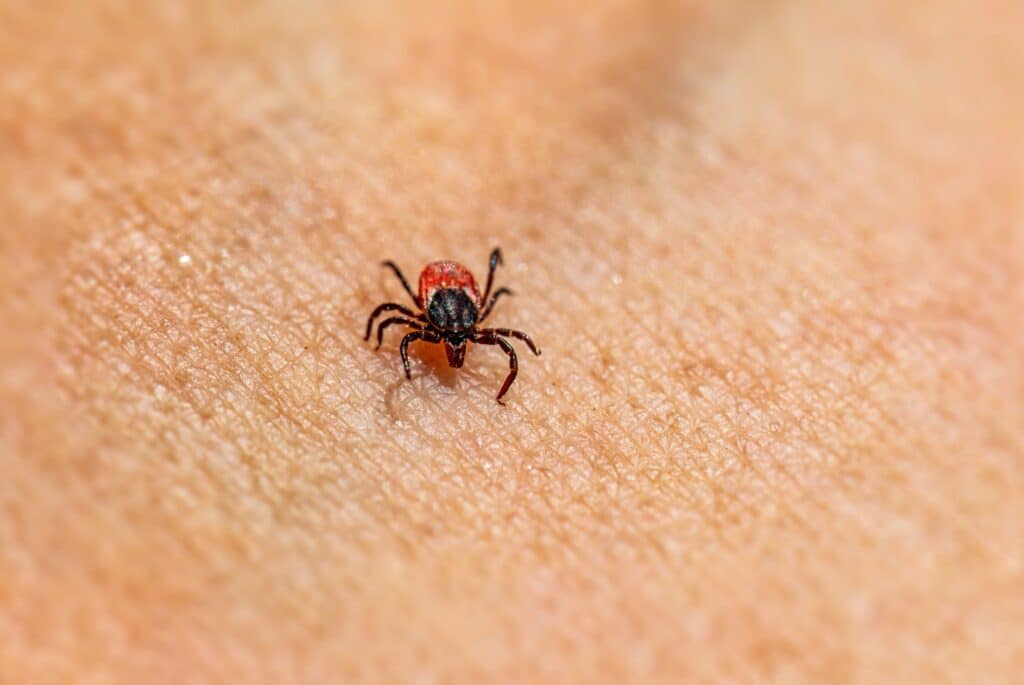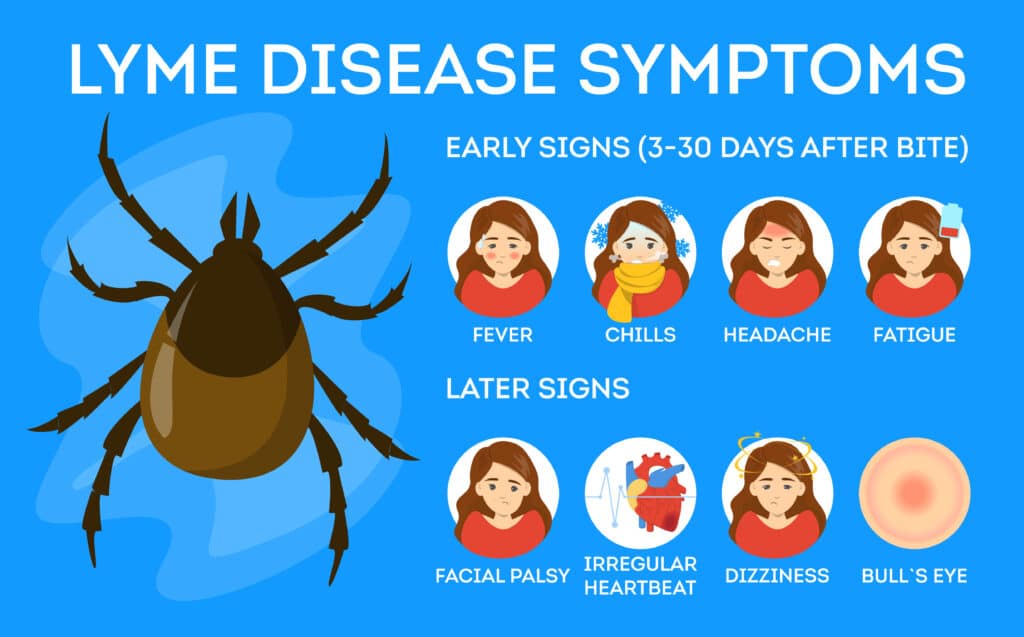Lyme Arthritis
Lyme arthritis is a type of joint inflammation that results from the bacteria that cause Lyme disease. The CDC (Center for Disease Control) receives about 30,000 reports of Lyme disease each year, and they estimate an additional 270,000 cases go unreported. Of those who know they have Lyme disease, about 25 percent of them will have symptoms that develop into Lyme arthritis. For those whose Lyme disease is left untreated, an estimated 60 percent of them will get Lyme arthritis. Thus early diagnosis and treatment of Lyme disease are integral to preventing the pain of Lyme arthritis.

Lyme disease and Lyme arthritis are caused by a bacteria, Borrelia burgdorferi, which is spread through the saliva of ticks. Tick bites usually look similar to mosquito bites, though they don’t itch, and many people don’t notice they’ve been bitten. Knowing and watching for the symptoms of Lyme disease is key to early detection and treatment. This helps those with Lyme to avoid late-stage complications like Lyme arthritis, which can occur if the disease is not properly managed.
Symptoms of Lyme Disease
Early symptoms of Lyme disease typically begin 3 to 30 days after infection. They can include a bullseye rash around the bite area and flu-like symptoms such as achiness, tiredness, headaches, and swollen lymph nodes.

Without treatment, symptoms can develop further. Stage two symptoms include additional rashes; pain in the back, hips, legs, and neck; muscular weakness or numbness in the hands, feet, and face; swelling of the eyes and eyelids with possible vision loss; and episodes of irregular heartbeat.
If the bacteria that causes Lyme continues to spread unchecked, late-stage (also called stage three) symptoms can appear, typically 2 to 12 months after the bite. Once late-stage symptoms show up, the initial symptoms of Lyme disease have typically gone away. The most common late-stage symptom of Lyme disease is joint swelling and pain (Lyme arthritis). If Lyme arthritis is not treated, it can cause permanent damage.
Lyme Arthritis Symptoms
The most obvious symptom of Lyme arthritis is a swelling of one or more joints. The main difference between Lyme arthritis and osteoarthritis is that, in Lyme arthritis, the swelling can come and go or move between joints. It typically affects large joints like the knees may also occur in your shoulder, ankle, hip, wrist, elbow, and jaw. The affected area may feel warm to the touch and painful when moved.

Joints affected by Lyme arthritis can become quite swollen, giving the appearance of being extremely painful. However, this may not be the case, and your swollen joint may look worse than it feels. The pain may also come and go, only impacting your regular activities occasionally.
Lyme arthritis can look similar to other forms of arthritis. It does, however, have unique characteristics that can help your orthopedic specialist or family medicine practitioner differentiate it from other types of arthritis.
Common Lyme arthritis symptoms include:
- Pain and inflammation in one or a few joints, typically large joints like the knees and ankles
- Intermittent and asymmetric symptoms that move around—e.g., pain in your left knee one day and right elbow the next
- Swelling that looks worse than it feels
Diagnosing Lyme Arthritis
Most people who get Lyme don’t remember being bitten by a tick, and the symptoms of the disease mimic those of other conditions. Thus it’s imperative to prevent tick bites and seek medical attention if you have been around ticks and have any symptoms of Lyme.
Lyme disease is diagnosed with blood tests, usually administered in two separate steps. Tests for Lyme detect the antibodies the body makes in response to the bacterial infection. Because these antibodies can take several weeks to develop, more than one test may be necessary if your infection is recent.
Lyme disease tests sometimes deliver false negatives or positives. However, the fact that Lyme arthritis is a symptom of late-stage Lyme disease means false-negative tests aren’t often an issue. False positives can occur if you have a disease like mononucleosis (mono), wherein arthritic symptoms are likely from rheumatoid arthritis. Rheumatoid arthritis is typically symmetric, however, whereas Lyme arthritis is not.
An orthopedic doctor specializing in arthritis can test fluids from the affected joint(s) to determine the underlying cause and proper treatment of your symptoms.
Does Lyme arthritis go away?
Once Lyme disease develops into Lyme arthritis, orthopedic specialists will treat it and its symptoms. You’ll be given a 28-day course of oral antibiotics and recommendations for accommodations and exercises to relieve your pain and inflammation.
Lyme arthritis treatment generally resolves most cases. If joint pain and swelling persist, you may be given a second course of antibiotics, sometimes through an IV. In the rare instance that symptoms continue still, you’ll be referred to a rheumatologist for disease-modifying anti-rheumatic drugs (DMARDs) or possible surgery.
How to Prevent Tick-Borne Illnesses

Some areas of the country are higher-risk areas for tick-borne disease, including the Atlantic coast (Maine to Virginia) and the upper midwest (Minnesota, Wisconsin, and Michigan). As the climate continues to change, however, Lyme disease is increasing in areas where it was previously less common.
Keep your skin covered when spending time in grassy and wooded areas. Use an EPA-approved bug repellent and check yourself for ticks and bites after spending time in outside. If you’ve been bitten by a tick or are showing any symptoms of Lyme disease, it’s important to seek treatment right away.
If you have questions about arthritis or want to speak with an orthopedic specialist, please contact us or comment below.
Leave a Reply